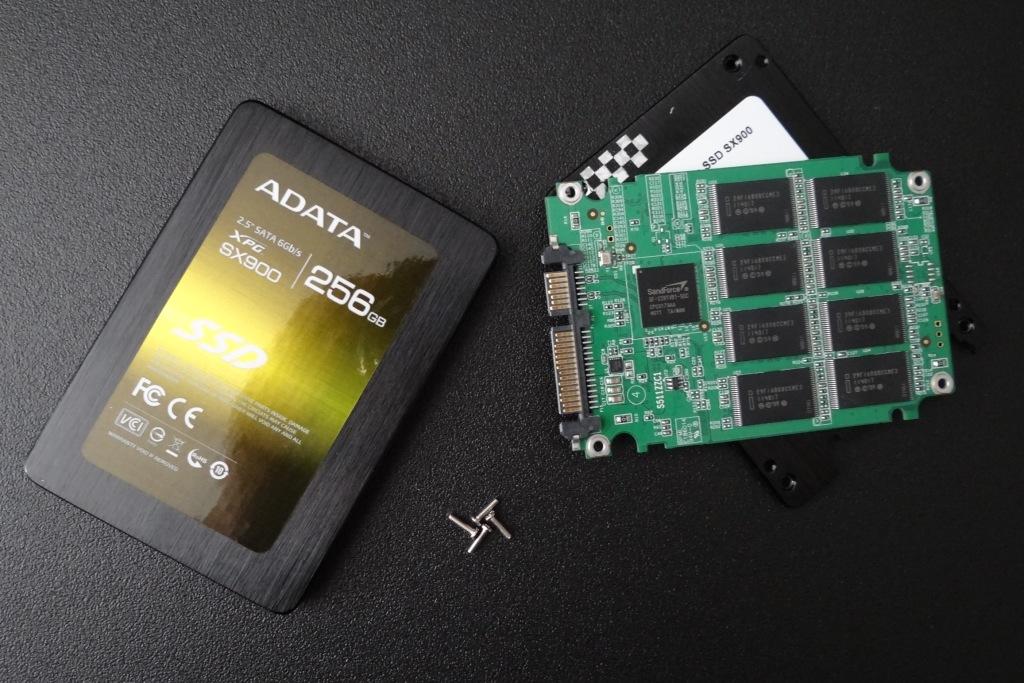REPORT ANALYSIS AND FINAL THOUGHTS
It is not often that we cut right to the chase but this has to be one of the most refreshing SSDs tested in quite some time. In fact, it was received at 3:00pm today and I haven’t been able to take my hands of it yet. It’s like getting into a good book that you just hate to put down.
When we posted the LSI SandForce release back in February, even I wouldn’t have placed my money on performance not being lost for capacity gain. There is always give and take after all. Isn’t there?
 The performance of the ADATA XPG SX900 is typical of any ‘SandForce Driven’ premium caliber SSD and it is the first to be released without the penalty of 7% over provisioning as we have become accustomed to. A quick check with e-tailers brought the 128GB version in at $169.99 which was excellent and the 256GB version a bit higher at $379.99. This is the typical price point we see for most premium ‘SandForce Driven’ SSDs that are only 240GB.
The performance of the ADATA XPG SX900 is typical of any ‘SandForce Driven’ premium caliber SSD and it is the first to be released without the penalty of 7% over provisioning as we have become accustomed to. A quick check with e-tailers brought the 128GB version in at $169.99 which was excellent and the 256GB version a bit higher at $379.99. This is the typical price point we see for most premium ‘SandForce Driven’ SSDs that are only 240GB.
ADATA has included the adapter bracket, mounting screws and a Quick Start Guide with the SSD, but then they went a step further by including a downloadable copy of Acronis True Image which is great to see. It goes without saying that we were very impressed with this SSD and it is definitely worthy of the Editor’s Choice Award.
 The SSD Review The Worlds Dedicated SSD Education and Review Resource |
The SSD Review The Worlds Dedicated SSD Education and Review Resource | 

I don’t think it’s entirely unexpected that ditching RAISE would help increase speeds somewhat. After all, the drive isn’t having to write the necessary parity(?) data anymore to recover from a die failure. With that said, I’ve seen increased write performance from SF’s using the new reference 5.02a FW anyway.
So it looks like you do get slightly better performance overall and more capacity in exchange for less failure tolerance.
It would be interesting to run a pair of these in RAID 0 to see what the low RAISE does to performance.
Can’t see how there would be any major surprises, Crucial have been using the 0% over-provisioning for years, The only over-provisioning they’ve had has been the difference between the size of actual memory modules ( gigabytes ) and the actual size of the ssd drive ( Gibibytes ) it still leaves 7% difference for over-provisioning, which is classed as 0%.
More over-provisioning still makes for a better ssd drive where it matters, but I guess size is everything as far as the market is concerned.
PommieB
This is a great review you have there as usual 🙂
I am Muhammad Al-Jawhary, an Arab reviewer and technical editor, and I have a 128GB sample of the drive that I have reviewed here:
https://www.arabpcworld.com/forum/showthread.php?t=4918
That makes us two sides of the same coin, you have done the only review in English (as far as I know), and I have done the first and only review in Arabic, too 😀
The performance is great, and it has 8 GB more than its brother; the S511.
Ummm isnt that my photo of ‘all the ssds’ in your review? I would appreciate the link back to our site and article if you are using any of our literature or piks.
Thanks for your reply, it is a great pleasure to be here 🙂
Actually, it is your pic, and the pic has a hyperlink embedded (If you press the image, you will be directed to the great article).
We may have some future cooperation together, I may be able to translate some of your guides and articles and post them in the Arab world, and of course, the credit is all yours, not mine.
When I click on the pik, it brings me only to the pik…. Can we fix the link so it goes to the article? And yes, I am sure we can affiliate post for one another in the future.
Actually, the image has a hyperlink as I said before, but the site uses a script to show the images, which in turn hides the hyperlink. Nonetheless, I have added a credit line under the photo that contains the link. Sorry for the inconvenience 🙂
Have you seen those numbers I got with the drive? They used asynchronous NAND flashes with the 128GB version! The same NANDs used with Kingston’s SSDNow V+200.
There is a slight inaccuracy in your reviews which is (implicitly) already mentioned above, but which i’d like to clear up. Flash memory has raw capacities of binary powers, this one e. g. has a raw capacity of 256 * 2^30 = 274877906944 bytes = 256 “GiBi” Bytes. Vendors prefer to use decimal powers, as the numbers are slightly higher, so this SSD has a raw capacity of 275 * 10^9 Bytes = 275 GB. 7% of these are used for over-provisioning leaving the user with 256 GB = 238 GiB. Windows, again, uses binary powers to display drive capacities, so the latter number is what you see there. (No, NTFS formatting doesn’t swallow 18 GB of the drive capacity. 😉 Other Sandforce SSDs with 240 GB = 223 GiB user capacity use 14% of the raw flash capacity for over-provisioning.